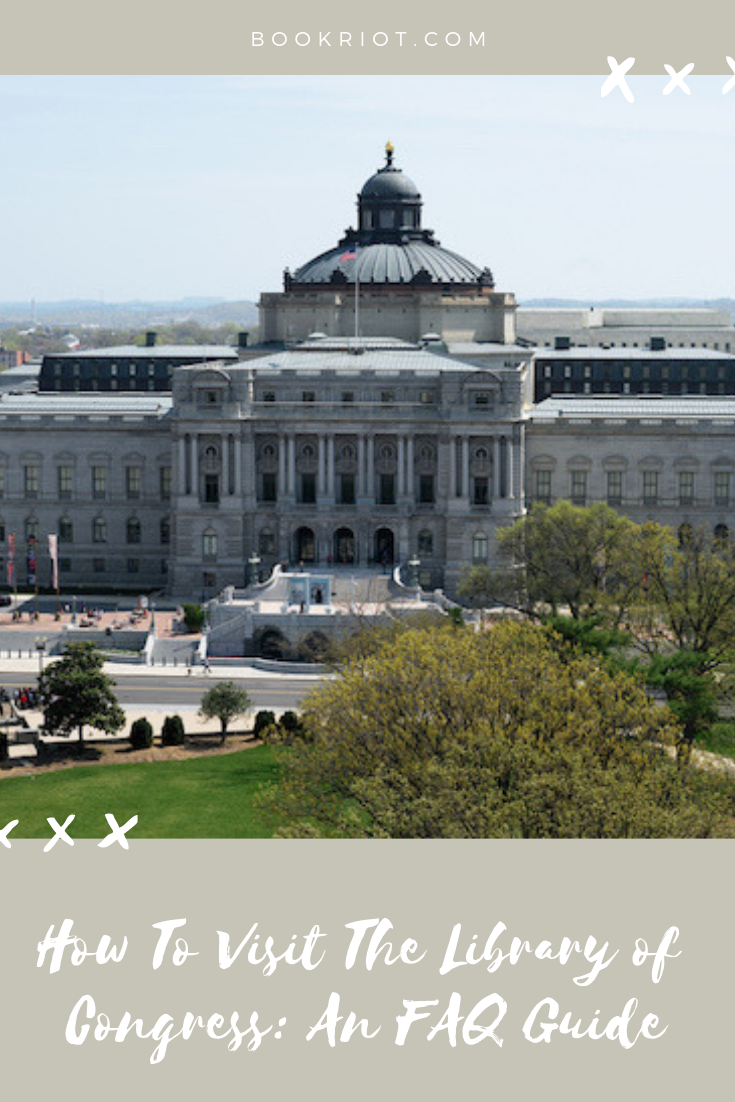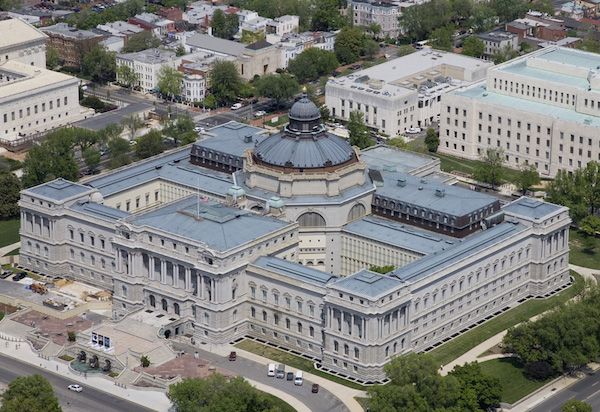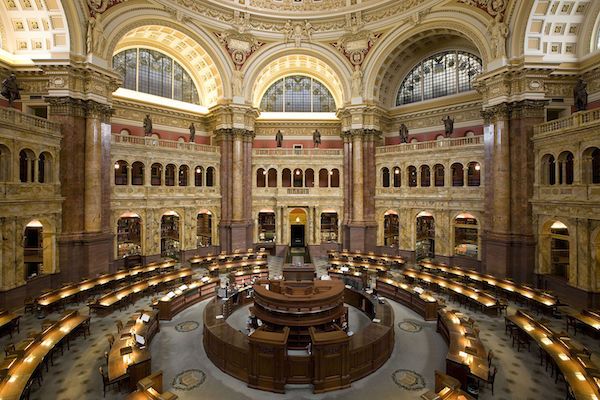In reality, the Library of Congress is very much a place you can visit, tour, and spend time in reading and researching. As an adult, I got a chance to move to Washington, D.C., and live a few blocks from the Library of Congress. Even if it wasn’t a library, the Library of Congress would still be one of my favorite buildings because it’s so beautiful. Reading outside the Library is lovely. You get a nice view of the Library’s facade and a panoramic view of the Capitol (just be ready to see lots of tourists taking selfies)!
1. Where and what is the Library of Congress?
The Library of Congress was established in Washington, D.C., on April 24, 1800. Unlike the libraries most of us are familiar with, the circulation library doesn’t publicly circulate books. Instead, the Library of Congress mainly serves the 535 members of the U.S. Congress and their staff. In fact, the Congressional Research Service are hundreds of experts in all types of fields that prepare objective reports for Congress based on the legislation they’re working on at the time. The Library of Congress has a budget of about $684 million and a staff of over 3,000 people.
2. Exactly how many books are in the Library of Congress?
The Library of Congress packs a whopping 38 million books, 3.6 million recordings, 14 million photographs, 5.5 million maps, 8.1 million pieces of sheet music, and 70 million manuscripts into its three buildings on Capitol Hill. There are other miscellaneous items in the Library that bring the grand total to 167 million items. To put that in perspective, most public libraries have anywhere from thousands to hundreds of thousands of books. The U.S. does not have an official language. This is reflected by the Library of Congress, which has items in 450 different languages. It’s also the oldest federal cultural institution!
3. Who can use the Library of Congress?
Although the Library mainly serves Members of Congress, it is also open to the public to help with any research needs from members of the public. You can access these materials within the Library of Congress, but you can’t take them out. Additionally, you may request materials through an inter-library loan system as a “last resort,” but you will still have to look at the materials within the borrowing library.
4. How long does it take to tour the Library of Congress?
If you like to tour places yourself, plan for 1–2 hours, depending on how quickly you tend to saturate on museums and tours. If you want to take the tour, I would set aside 2–3 hours. The must-see parts of the Library of Congress are the Main Reading Room and the Great Hall, which is where you enter the Library. The Great Hall itself is worth examining closely—there are intricate designs on the wall that include various fields of study and quotes from famous scientists, poets, artists and others.
Bonus: the Supreme Court and Capitol buildings are extremely close and are also worth touring the same day you do the Library of Congress. There are also plenty of restaurants if you continue walking past the Library of Congress if you need a lunch break!
5. How can I use the Reading Rooms?
Obtain a Reader Identification Card. Anyone with a government ID can get one, even if you aren’t a D.C. resident. The whole process takes 15–30 min, depending on how busy they Library is—just ask the front desk to direct you towards the office that issues the cards, since you have to walk down a relatively empty and unmarked hallway to get there. Once you have a Reader Identification Card, you can enter the Main Reading Room, which most visitors observe from above through a soundproof glass room. In my opinion, entering the Main Reading Room is worth experiencing, even if you are only visiting for the day. There is an unmatched sense of awe and scholarliness you get just from being in the room.
Here are more tips on how to make the most of your Library of Congress experience. Happy visiting!



